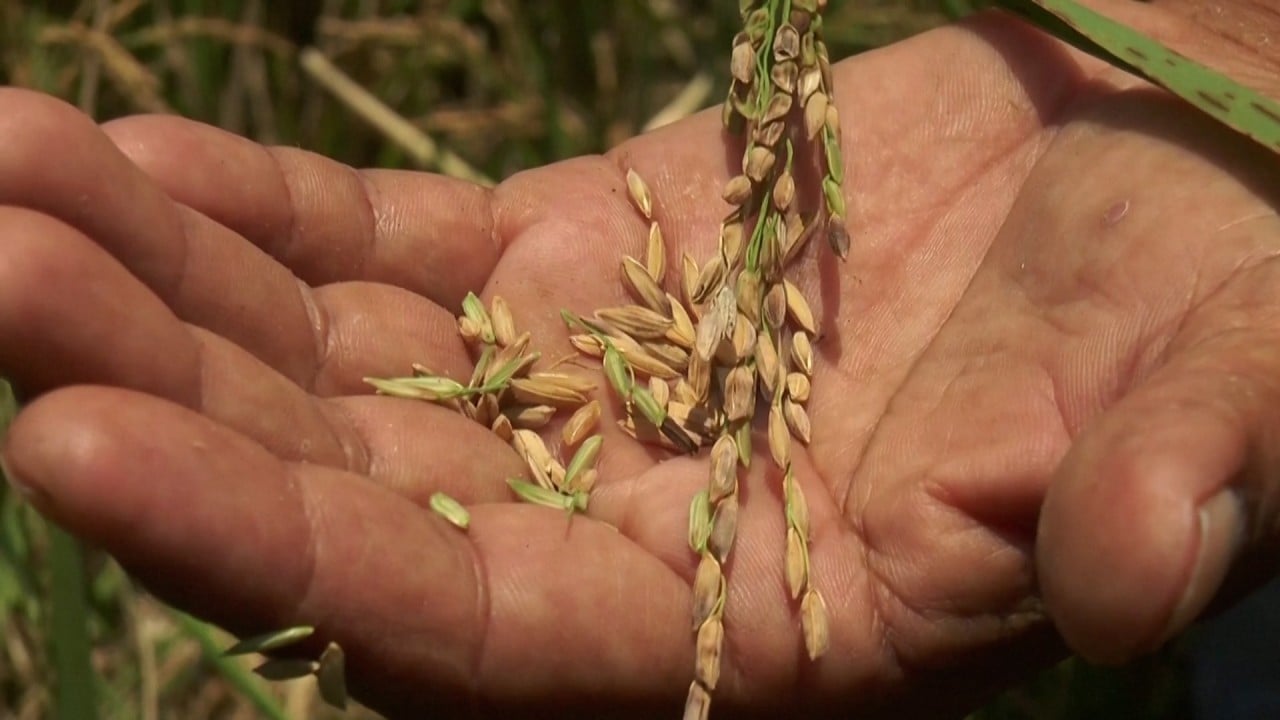
In Malaysia’s drought-hit Sabah, taps run dry – with more extreme heat expected
- The east Malaysian state is surrounded by water, but years of infrastructure neglect and an El Nino-triggered drought have brought severe shortages
- Tankers have been deployed to supply villages ‘around the clock’, spotlighting the plight of rural poor in one of Malaysia’s least-developed states
The drought – driven by El Nino conditions that bring prolonged hot and dry weather to the Southeast Asian nation – has been made worse by old, failing water infrastructure, causing taps to run dry since mid-February in the district, 40km southwest of state capital Kota Kinabalu.
To the west, Papar is surrounded by sea and is bisected by a river. Still, around 150,000 people in the surrounding area are experiencing a severe water shortage, according to state government estimates.
Even on a good day, Papar residents say they are faced with regular water rationing as ageing infrastructure struggles to match demand.
Dozens of water tankers have been deployed to make up for the shortfall, evoking a sarcastic response from Eddy, who only gave his first name and feels short changed by the state government after years of neglect.
“They are sending water around the clock to people in the villages. They are the heroes now,” the 44-year-old cook said.
Vietnam’s Mekong Delta ‘rice bowl’ cracks in monster February heatwave
Much of Malaysia is being affected by the drought, but the federal government expects April and May to bring some relief in the form of thunderstorms and heavy rains before another punishing dry spell from June to September. On Monday, Deputy Prime Minister Ahmad Zahid Hamidi told parliament that a person had died from heatstroke last month in Pahang, a state in Peninsular Malaysia.
Farmers’ livelihoods are expected to take a hit, experts say, with power consumption also being pushed up as people turn to air conditioners and other appliances to beat the heat.
Local authorities declared a state of emergency in Papar on March 13, mandating that hospitals, places of worship, old people’s homes and schools be prioritised as they worked on sourcing water from other districts to meet residential needs.
An emergency water treatment facility serving the district also became contaminated with seawater, the state government said, after receding levels in the Papar river allowed briny backwash to travel 13km upstream.
The facility’s shutdown on February 17, along with persistent low output from two other treatment plants serving the district, caused daily output to fall to 35 million litres per day (ML/d) – well below the full capacity of 63 ML/d, according to state government data.
Papar may be the worst hit, but it is not the only part of Sabah affected by the drought.
Across the state, total treated water output has dropped more than 4 per cent to 1,466 ML/d, Chief Minister Hajiji Noor said last week following the suspension of operations at the Papar emergency plant and another facility in Tawau district on the east coast.
Understanding the economic consequences of a prolonged drought is essential for formulating effective mitigation strategies and ensuring the resilience of our economy
Sheeba Chenoli, a meterologist and climate expert with the University of Malaya, said the current El Nino conditions follow a “triple-dip La Nina” in the preceding three years, referring to the opposing climate pattern that results in higher rainfall for Malaysia.
“Triple-dip La Ninas lead to elevated risks of floods, and weather extremes simply because they last so long,” she said.
“Though it is difficult to categorise them as the new normal, there is growing evidence that climate change significantly affects the characteristics of extreme events.”
“Never have we been so close – albeit on a temporary basis at the moment – to the 1.5 degrees Celsius lower limit of the Paris Agreement on climate change,” said WMO Secretary General Celeste Saulo in a statement, referring to the cap countries had agreed to set at UN climate talks in 2015.

The rural poor in lower- and middle-income countries are most at risk from climate change, with few means at their disposal to deal with water and food insecurity, under-nutrition, migration and loss of livelihoods, said Sharon Seah, a senior fellow and coordinator of the ISEAS-Yusof Ishak Institute’s climate change in Southeast Asia programme.
“There are longer-term health, educational and social implications, not to mention the mental health burden and stress on affected populations, that have not been investigated yet,” she said.
To deal with the threat of climate change, Malaysia’s government has said it is pursuing several parallel initiatives to manage crop and forest resilience, conserve natural ecosystems and biodiversity, make water management more efficient and develop essential tools to better analyse and predict climate patterns over the next century.
Southeast Asia haze crisis sparks fresh blame game, calls to deter ‘bad apples’
Nik Nazmi Nik Ahmad, Malaysia’s minister of natural resources and environmental sustainability, said the government was closely monitoring conditions to identify the outbreak of forest fires, optimise the management of water resources and carry out cloud-seeding operations where possible.
“Understanding the economic consequences of a prolonged drought is essential for formulating effective mitigation strategies and ensuring the resilience of our economy,” he told This Week in Asia.
“As such, we prioritise the need for thorough analysis and will work diligently to gather the necessary data to provide accurate estimates.”
While the big picture needs addressing, Papar contractor KC Chin says he has more immediate concerns such as being able to flush his toilet.
“There is a lot of water around, it’s just that the pipes are empty,” he said.


